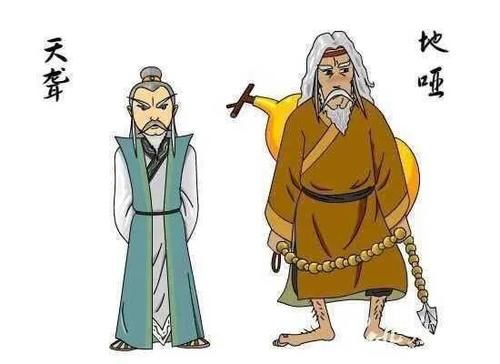10 дёӘд»»еҠЎеңЁ 3 дёӘзәҝзЁӢдёӯиҝҗиЎҢ гҖӮйҖҡиҝҮйҷҗеҲ¶зү№е®ҡд»»еҠЎдҪҝз”Ёзҡ„зәҝзЁӢж•°пјҢжӮЁеҸҜд»Ҙж №жҚ®дјҳе…Ҳзә§еҲҶй…ҚзәҝзЁӢж•°пјҡеҜ№дәҺйҮҚиҰҒдё”йў‘з№Ғзҡ„д»»еҠЎдҪҝз”ЁжӣҙеӨҡзәҝзЁӢпјҢеҜ№дәҺзҗҗзўҺжҲ–еҒ¶е°”зҡ„д»»еҠЎдҪҝз”Ёиҫғе°‘зәҝзЁӢ гҖӮExecutorService е…·жңүй«ҳж•Ҳе’Ңз®ҖжҙҒзҡ„зү№зӮ№пјҢжҳҜеӨ§еӨҡж•°еӨҡзәҝзЁӢеңәжҷҜзҡ„йҰ–йҖүйҖүйЎ№ гҖӮ
еҰӮжһңжӮЁйңҖиҰҒжӣҙеӨҡзҡ„жҺ§еҲ¶е’ҢзҒөжҙ»жҖ§пјҢиҜ·жҹҘзңӢ ThreadPoolExecutorпјҢе®ғжҳҜ Executors.newFixedThreadPool() иҝ”еӣһзҡ„ ExecutorService зҡ„е®һйҷ…е®һзҺ° гҖӮжӮЁеҸҜд»ҘзӣҙжҺҘеҲӣе»әе…¶е®һдҫӢжҲ–е°Ҷиҝ”еӣһзҡ„ ExecutorService е®һдҫӢиҪ¬жҚўдёә ThreadPoolExecutor е®һдҫӢд»ҘиҺ·еҫ—жӣҙеӨҡжҺ§еҲ¶жқғ гҖӮ
4. ForkJoinPoolForkJoinPoolжҳҜеҸҰдёҖз§ҚзәҝзЁӢжұ пјҢжӯЈеҰӮе…¶еҗҚз§°жүҖзӨә гҖӮиҷҪ然е®ғеңЁи®ёеӨҡе…¶д»–ејӮжӯҘж–№жі•зҡ„еә•еұӮдҪҝз”ЁдёӯпјҢдҪҶеҜ№дәҺеҸҜд»ҘеҲҶи§Јдёәиҫғе°Ҹдё”зӢ¬з«Ӣеӯҗд»»еҠЎзҡ„д»»еҠЎжқҘиҜҙпјҢе®ғд№ҹйқһеёёејәеӨ§пјҢиҝҷдәӣд»»еҠЎеҸҜд»ҘйҖҡиҝҮеҲҶиҖҢжІ»д№Ӣзҡ„зӯ–з•ҘжқҘи§ЈеҶі гҖӮ
е…¶дёӯдёҖдёӘд»»еҠЎжҳҜеӣҫеғҸи°ғж•ҙеӨ§е°Ҹ гҖӮеӣҫеғҸи°ғж•ҙеӨ§е°ҸжҳҜеҲҶиҖҢжІ»д№Ӣй—®йўҳзҡ„дёҖдёӘеҫҲеҘҪзҡ„дҫӢеӯҗ гҖӮдҪҝз”ЁForkJoinPool пјҢ жӮЁеҸҜд»Ҙе°ҶеӣҫеғҸеҲҶжҲҗдёӨдёӘжҲ–еӣӣдёӘиҫғе°Ҹзҡ„еӣҫеғҸпјҢ并еҗҢж—¶и°ғж•ҙе®ғ们зҡ„еӨ§е°Ҹ гҖӮд»ҘдёӢжҳҜImageResizeActionзҡ„зӨәдҫӢпјҢе®ғе°ҶеӣҫеғҸи°ғж•ҙдёәз»ҷе®ҡзҡ„еӨ§е°Ҹ гҖӮ
package multithreading;import JAVA.awt.image.BufferedImage;import java.util.concurrent.RecursiveAction;public class ImageResizeAction extends RecursiveAction {private static final int THRESHOLD = 100;private final BufferedImage sourceImage;private final BufferedImage targetImage;private final int startRow;private final int endRow;private final int targetWidth;private final int targetHeight;public ImageResizeAction(BufferedImage sourceImage,BufferedImage targetImage,int startRow, int endRow,int targetWidth, int targetHeight) {this.sourceImage = sourceImage;this.targetImage = targetImage;this.startRow = startRow;this.endRow = endRow;this.targetWidth = targetWidth;this.targetHeight = targetHeight;}@Overrideprotected void compute() {if (endRow - startRow <= THRESHOLD) {resizeImage();} else {int midRow = startRow + (endRow - startRow) / 2;invokeAll(new ImageResizeAction(sourceImage, targetImage,startRow, midRow, targetWidth, targetHeight),new ImageResizeAction(sourceImage, targetImage,midRow, endRow, targetWidth, targetHeight));}}private void resizeImage() {int sourceWidth = sourceImage.getWidth();double xScale = (double) targetWidth / sourceWidth;double yScale = (double) targetHeight / sourceImage.getHeight();for (int y = startRow; y < endRow; y++) {for (int x = 0; x < sourceWidth; x++) {int targetX = (int) (x * xScale);int targetY = (int) (y * yScale);int rgb = sourceImage.getRGB(x, y);targetImage.setRGB(targetX, targetY, rgb);}}}}иҜ·жіЁж„ҸпјҢImageResizeAction继жүҝдәҶRecursiveAction гҖӮRecursiveActionз”ЁдәҺе®ҡд№үйҖ’еҪ’зҡ„и°ғж•ҙеӨ§е°Ҹж“ҚдҪң гҖӮеңЁжӯӨзӨәдҫӢдёӯпјҢеӣҫеғҸиў«еҲҶжҲҗдёӨеҚҠ并并иЎҢи°ғж•ҙеӨ§е°Ҹ гҖӮ
жӮЁеҸҜд»ҘдҪҝз”Ёд»ҘдёӢд»Јз ҒиҝҗиЎҢImageResizeActionпјҡ
public static void mAIn(String[] args) throws IOException {String sourceImagePath = "source_image.jpg";String targetImagePath = "target_image.png";int targetWidth = 300;int targetHeight = 100;BufferedImage sourceImage = ImageIO.read(new File(sourceImagePath));BufferedImage targetImage = new BufferedImage(targetWidth, targetHeight,BufferedImage.TYPE_INT_RGB);ForkJoinPool forkJoinPool = new ForkJoinPool();forkJoinPool.invoke(new ImageResizeAction(sourceImage, targetImage,0, sourceImage.getHeight(), targetWidth, targetHeight));ImageIO.write(targetImage, "png", new File(targetImagePath));System.out.println("еӣҫеғҸи°ғж•ҙеӨ§е°ҸжҲҗеҠҹпјҒ");}еҖҹеҠ©ForkJoinPoolзҡ„её®еҠ©пјҢжӮЁзҺ°еңЁиғҪеӨҹжӣҙй«ҳж•Ҳең°и°ғж•ҙеӣҫеғҸзҡ„еӨ§е°Ҹ пјҢ е…·жңүжӣҙеҘҪзҡ„еҸҜдјёзј©жҖ§пјҢ并жңҖеӨ§зЁӢеәҰең°еҲ©з”Ёиө„жәҗ гҖӮ
5. CompletableFutureйҖҡиҝҮCompletableFutureпјҢжӮЁеҸҜд»Ҙе®Ңе…ЁеҸ‘жҢҘFutureзҡ„еҠҹиғҪ пјҢ 并жӢҘжңүи®ёеӨҡйўқеӨ–зҡ„зү№жҖ§ гҖӮе…¶дёӯжңҖзӘҒеҮәзҡ„еҠҹиғҪжҳҜе®ғиғҪеӨҹй“ҫејҸең°иҝһжҺҘејӮжӯҘж“ҚдҪңпјҢдҪҝжӮЁиғҪеӨҹжһ„е»әеӨҚжқӮзҡ„ејӮжӯҘз®ЎйҒ“ гҖӮ
public static void main(String[] args) {CompletableFuture<Void> future = CompletableFuture.supplyAsync(() -> {System.out.println(Thread.currentThread().getName());return "Hyuni Kim";}).thenApply((data) -> {System.out.println(Thread.currentThread().getName());return "жҲ‘зҡ„еҗҚеӯ—жҳҜ" + data;}).thenAccept((data) -> {System.out.println(Thread.currentThread().getName());System.out.println("з»“жһңпјҡ" + data);});future.join();}дёҠиҝ°д»Јз Ғеұ•зӨәдәҶCompletableFutureзҡ„дёҖдёӘе…ій”®ж–№йқўпјҡй“ҫејҸж“ҚдҪң гҖӮйҖҡиҝҮCompletableFuture.supplyAsync() пјҢ йҰ–е…ҲеҲӣе»ә并иҝҗиЎҢдёҖдёӘиҝ”еӣһеӯ—з¬ҰдёІз»“жһңзҡ„CompletableFuture гҖӮthenApply()жҺҘеҸ—еүҚдёҖдёӘд»»еҠЎзҡ„з»“жһңпјҢ并жү§иЎҢе…¶д»–ж“ҚдҪңпјҢжң¬дҫӢдёӯжҳҜж·»еҠ дёҖдёӘеӯ—з¬ҰдёІ гҖӮжңҖеҗҺпјҢthenAccept()жү“еҚ°з”ҹжҲҗзҡ„ж•°жҚ® гҖӮз»“жһңеҰӮдёӢжүҖзӨәпјҡ
ForkJoinPool.commonPool-worker-1ForkJoinPool.commonPool-worker-1ForkJoinPool.commonPool-worker-1Result: My name is Hyuni Kim
жҺЁиҚҗйҳ…иҜ»
- еҰӮдҪ•и®ҫи®Ў APIпјҹзңӢиҝҷдёҖзҜҮе°ұеӨҹдәҶ
- з”ЁIntelliJ IDEAиҝӣиЎҢеүҚз«ҜејҖеҸ‘
- жҺҢжҸЎиҝҷдә”жӢӣпјҢиҪ»жқҫеҢ–и§Јз”·з”ҹдёҚеӣһеҫ®дҝЎзҡ„е°ҙе°¬еұҖйқўпјҒ
- зӨҫдҝқзјҙ15е№ҙе’Ң25е№ҙеҫ…йҒҮе·®еҲ«жңүеӨҡеӨ§пјҹиҝҷ笔иҙҰе…Ҳз®—дёҖз®—пјҒ
- дёәдҪ•з”·еҘійғҪдјҡжўҰеҲ°дёҺејӮжҖ§дә§з”ҹе…ізі»пјҹиҝҷиғҢеҗҺж„Ҹе‘ізқҖд»Җд№Ҳпјҹ
- иҝҷвҖҳ3з§ҚвҖҷзҷҪй…’дёҚе®ңд№…з•ҷ
- жңүиҪҰдёҖж—ҸиҰҒжіЁж„ҸпјҢиҝҷ3дёӘж—ҘжңҹйқһеёёйҮҚиҰҒпјҢдёҖе®ҡиҰҒи®°жё…пјҢйҒҝе…ҚжүЈеҲҶзҪҡж¬ҫ
- еҚҺдёәжүӢжңәиҫ“е…Ҙиҝҷ3дёӘд»Јз ҒпјҢи®©жүӢжңәжӣҙжөҒз•…пјҢз”Ё3е№ҙд№ҹдёҚеҚЎйЎҝ
- еҫ®дҝЎеҲҶиә«жҖҺд№Ҳзҷ»еҪ•з¬¬дәҢдёӘеҫ®дҝЎпјҹжҲ‘зҢңдҪ дёҚжё…жҘҡиҝҷ3з§Қеҫ®дҝЎеӨҡејҖж–№жі•
- еҲ йҷӨзҡ„еҫ®дҝЎиҒҠеӨ©и®°еҪ•еҸҜд»Ҙиҝҷж ·жүҫеӣһпјҒ















![[з”із”іиҜҙиҙўз»Ҹ]дёүдёӘеҺҹеӣ 继з»ӯж–ҪеҺӢжІ№д»·пјҢеҺҹжІ№дәҡзӣҳпјҡзҫҺ油继з»ӯеңЁ20зҫҺе…ғйҷ„иҝ‘еҫҳеҫҠ](https://imgcdn.toutiaoyule.com/20200418/20200418052035947596a_t.jpeg)